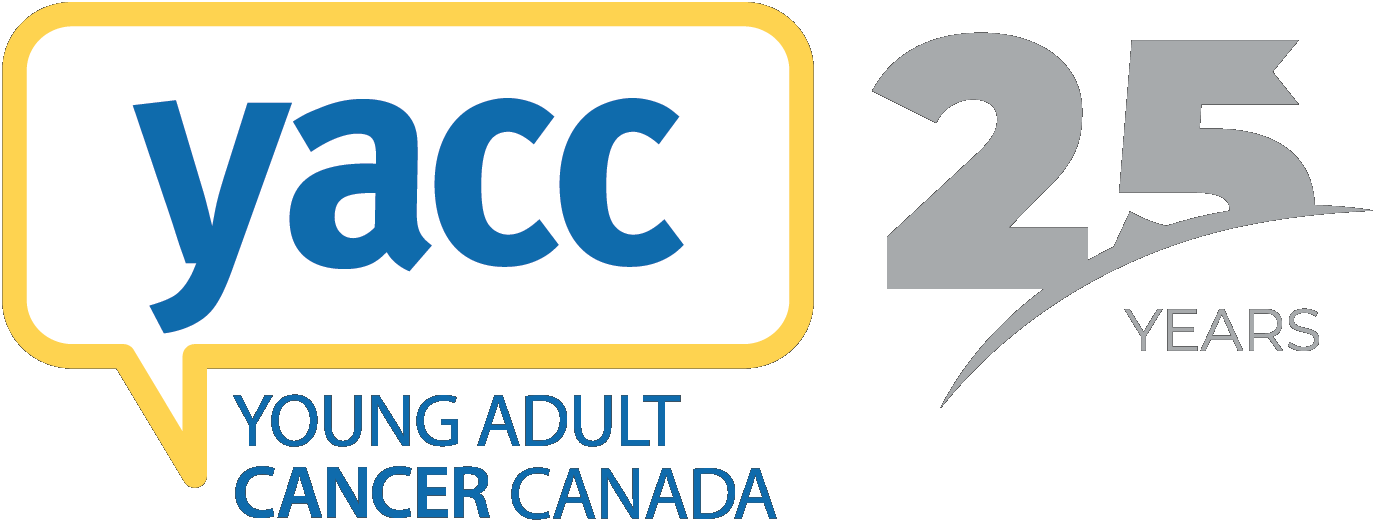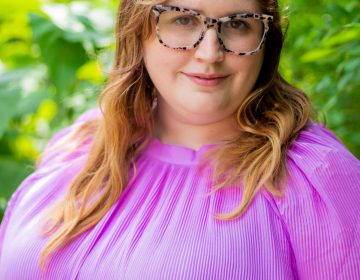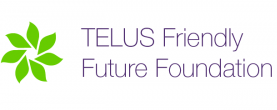Submitted by Mike Wark
After more than two years of waiting, a young man in Alberta is excited for the chance to build a unique friendship with a distant stranger who helped save his life, and happens to be his genetic twin. For Mike Wark, he considers the circumstances of this connection to be nothing short of miraculous.
The 30-year old from Red Deer, AB was unexpectedly diagnosed with Acute Myeloid Leukemia (AML), an aggressive form of blood cancer, in June 2018 following some lingering cold symptoms and routine blood work.
“Overnight, it was as if the world had been turned upside down,” said Mike. “One day I was a healthy 27-year old, launching my career, married to my best friend, and thinking about starting a family, the next day, I was lying in a hospital bed in another city, fighting for my life.”
Mike’s AML diagnosis kicked off an immediate crash course in blood cancer treatment for him and his wife, Lauren, where the couple spent the next seven months based out of the Tom Baker Cancer Centre in Calgary while Mike was undergoing treatment. Early on, it was determined that in order to save his life, an allogeneic stem-cell transplant was needed – which would involve a transfusion of genetically matched donor stem cells to effectively restart his immune system and destroy any remaining cancer cells, following several rounds of intensive chemotherapy and full-body radiation. To find a match, Mike’s medical team turned to the international stem cell registry – a collection of over 25 million potential donors from over 100 countries around the world.
It was at this point that 7,600 kilometers away in a small village in southern Germany, a young woman named Christiane Kruck would unexpectedly enter Mike’s life, although the two would remain anonymous to each other for the next two years.
 “At the time I got the call, I was told that I may have been matched to a patient needing my stem cells, and I was asked to come in for some further testing,” said Christiane. “Five years earlier, I had registered as a potential stem cell donor after a young girl in my village was diagnosed with leukemia and was in need of a stem-cell transplant. From then on, I always said I would be happy to help someone if I could!”
“At the time I got the call, I was told that I may have been matched to a patient needing my stem cells, and I was asked to come in for some further testing,” said Christiane. “Five years earlier, I had registered as a potential stem cell donor after a young girl in my village was diagnosed with leukemia and was in need of a stem-cell transplant. From then on, I always said I would be happy to help someone if I could!”
Fine-typing, the process that compares the human leukocyte antigen (HLA) markers of potential donors and recipients, would reveal that Christiane was indeed Mike’s genetic match. On October 24, 2018, Mike received a transplant of 766 million of Christiane’s live stem cells, couriered directly from Germany. It was ultimately a successful procedure, and three months later in January 2019, following a final bone marrow biopsy, Mike’s doctors pronounced him in full remission and 100 per cent cancer-free.
“From the moment I found out that we had a matched donor, I was curious to find out who they were. After the transplant, that curiosity continued to grow, and I wanted to get in contact with my donor to thank them for helping save my life,” says Mike. But due to regulations in place, it was not possible for Mike to learn the identity of his donor until two years had passed following the transplant, and then only with the mutual consent of both the donor and recipient. “At the time of the transplant, the only information I knew about my donor was that she was a young woman in her twenties, and that she had a different blood type than me. I had no idea where she was, or what inspired her to donate. But I was eager to find out!”
Meanwhile in Germany, Christiane was equally interested about what had happened to the recipient she had been matched to. Three months after the transplant, she received word through the DKMS (the German stem cell registry) that “her patient” was a Canadian man in his twenties and that the transplant had been successful. But upon further inquiry, no more information was available to her.
“I was happy the transplant had worked, but wanted to find out more about the person I had helped,” says Christiane. “I didn’t know about the regulations prohibiting contact between the donor and recipient for two years, so I assumed that maybe he didn’t wish to get in contact. I was a bit sad, but I understood and respected this.”
And so for the next two years, life went on for Mike and Christiane – each of them curious as to the other’s identity, but still remaining anonymous. Then, as Mike approached the second anniversary of the stem cell transplant, the opportunity to learn his donor’s identity finally arrived. “We sent away the consent forms to release my contact details, and we hoped that my donor would do the same,” Mike said. “But after two years, we had no idea whether she would or not. I suppose it’s a very personal decision.”
Christiane was surprised and excited to receive the contact request through the DKMS. She sent back the completed forms, and a couple weeks later in early November 2021, coincidentally on Mike’s 30th birthday, he received a call from his medical team sharing her name, location, and contact details.
“It was pretty mind-blowing,” said Mike. “For two years, I knew that she was out there somewhere, but knew nothing about her. Then of all places, it turns out that my genetic twin is in Germany! Finding out that was the best birthday present I could ask for!”
Since that time, Mike and Christiane have begun forming a unique, international friendship, one which they both hope will culminate in being able to meet in person one day when pandemic restrictions are lifted. Given the impact that stem-cell donation has had upon both of their lives, they wish to encourage potential donors by sharing details of their experience, and answering questions about their unique connection.
What was the process of donating and receiving stem cells like for both of you?
CHRISTIANE: When I got the message from the DKMS informing me that I might be eligible for donation, I was really surprised. They asked me if I was still willing to donate, and I agreed. I had to visit my doctor for some blood tests to check my genetic markers again to confirm the genetic match. After that I had a complete medical checkup to ensure I was healthy and able to donate stem cells.
In my case I made a peripheral donation, rather than a bone marrow donation, the type of transplant needed depends on the receiver. An IV was placed into both of my arms, through which blood was drawn and filtered through a machine to retrieve the stem cells, and returned to me again. This process took a few hours. After that I felt fatigued and weak, but otherwise fine. A few days before the donation I had to give myself injections — one in the morning, one in the evening — to stimulate stem cell growth and transfer the cells from the bone marrow into the blood. At first this felt a bit strange because I hadn’t done this before, but it worked. The DKMS offered me some help if I were to need it. I always thought about the receiver and all the things he or she would have to bear. I have to say, if just a few hours in the hospital can give someone a second chance at life, what else could be a greater gift?
MIKE: In the lead-up to the stem-cell transplant, I went through some very rigorous testing to make sure that my body could handle the prep-chemo and radiation needed prior to receiving the cells. Then, eight days prior to the transplant, I started on a course of heavy chemotherapy and full-body radiation aimed at breaking down my bone marrow and destroying any remaining leukemia cells so it could be built back up again with the donor stem cells. The biggest risk was that my donor might have second thoughts about donating after I had started chemo, which happens in up to 50 per cent of donations. If that were to happen, we’d have to scramble to find an alternate donor otherwise my life would be at risk. Thankfully, that didn’t happen.
Transplant day was a surreal experience. The stem cells arrived in what looked like a very expensive padded lunchbox, and I got to hold the bag in my hands before they were transfused through my IV Central Line. It’s an incredible feeling to hold something you know has the power to save your life. Following the transplant, the next few weeks of recovery were pretty rough. I was an in-patient in the blood cancer ward for about 20 days and on strong painkillers to help with the transplant side-effects for a good portion of that. There was a 100-day observation period following the transplant to determine whether the stem cells had properly engrafted, and at the end of that period in January 2019, a final bone marrow biopsy confirmed that I was 100 per cent cancer-free!
How was the experience of finally being able to make contact with each other?
M: At first, I was tempted to send an email introducing myself and thanking Christiane for helping save my life, but after thinking about it and waiting so long to make contact, I decided that a letter would be more personal. So I wrote a long letter and included some pictures and sent it away by registered mail. I kept tracking it’s progress as it made its way to Germany, and was a bit frustrated when I saw online that it appeared to be indefinitely stuck in a sorting depot in Frankfurt! Finally after seven weeks of not seeing any progress, I emailed Christiane a copy of my message. She got back to me immediately, and said that she had received the letter several weeks earlier and sent a reply by mail, too!
It was pretty amazing being able to finally make contact with her after waiting so long. When Christiane’s letter and pictures arrived in January, it was very meaningful to read about her experience and her shared desire to get in contact and to finally be able to put a face to my donor. We’ve since decided that as nice as handwritten letters are, it’s much faster to communicate online! We’ve recently taken to talking through instant messenger, and just did our first video call. That was quite the experience.
C: The only information I got first about the receiver of my stem cells was that he was a young man between 21 and 30 years old and he lived in Canada. But I received this information three months after the donation, quite a long time ago now, so it was a big surprise for me and I was very excited in October when I received the request through the DKMS for my contact details, and sent back the forms the same day. From then on, I knew my recipient also wanted to get in touch, and I felt as though I was expectantly “waiting for a message.” I hoped to perhaps receive an email from Mike, but receiving a letter was much more special! To see Mike’s pictures, especially these from the transplant day with my stem cells in his hands, was mind-blowing and also a bit surreal.
Being able to talk online has been really great. I studied English at school, and getting to know my stem cell recipient gives me a wonderful chance to improve my language skills in a meaningful way. I don’t know what I was expecting but all of a sudden this man, who was a complete stranger for me for the last two years, but about whom I was thinking about time and again, became real — and this is such a wonderful thing.
What were you most surprised to find out about each other?
M: Finding out that Christiane was German was a big surprise for me. My family background is mixed ethnicity Chinese-Canadian and Australian, so I had assumed that my donor would probably be a similar ethnic match. But apparently, this doesn’t have to be the case. Somehow, regardless of our differences, the two of us are a perfect genetic match. I still don’t fully understand the science behind that, but I find it fascinating!
Another interesting surprise was learning about inherited traits I may have picked up from my donor. Thankfully, no allergies transferred over from her to me with the stem cell transplant, but since then, I’ve developed a voracious enjoyment of sweet foods — such as chocolate — that I didn’t have before the transplant. Christiane shares this preference, so it is likely I got it from her!
C: When I donated my stem cells for Mike, I just got the message that I was a genetic match for another person. When I talked to Mike last week, he told me that I was actually a 10/10 match, so the perfect match for him! That was a big surprise and very fascinating for me because we were strangers to each other and live in very different parts of the world! Also surprising for me was the fact that Mike and I don’t have the same blood type. I didn’t know that the donor and recipient’s blood type doesn’t have to be the same. I was very surprised, when Mike told me that his blood type will turn into mine after the donation! That’s overwhelming and fascinating!
I was also very surprised to read that Mike was curious for the last two years about my identity. In Germany you can start anonymous contact a year after the transplant. I didn’t know this is not possible in Canada and thought maybe he did not wish to get in contact with me, which would also be understandable. So it was such a great thing to hear he was and is also interested in getting to know each other.
What do you find most meaningful about the donor-recipient connection?
M: As the recipient of genetically matched stem cells, I will always hold a deep appreciation for Christiane’s willingness to donate, and her genuine desire to help save the life of a total stranger. Over the past month, we have had the opportunity to learn a lot about each other’s lives. Despite living on opposite sides of the world, speaking different languages, and coming from very different cultures, we have much in common in our desire to help those around us and to build what I hope will be a lifelong connection. Not everyone out there gets to meet their genetic twin, and I find something about that connection to be very special. I hope that Christiane feels the same way.
C: When I first registered to become a stem cell donor, I thought this was an important thing and maybe one day I could help someone with this. When I got the message to be able to donate, I was glad to help someone in cancer treatment and happy to get the possibility to do this. I knew the donation would be a great gift for the receiver, but maybe I didn’t realize the full meaning because he was a complete stranger for me and I didn’t know his story. But when I started talking with Mike, I became aware of how much my donating stem cells really meant to him and his family, and how important it was. I was very touched by the thankful words he wrote to me. And it’s always great to find out more about him and his life.
Is there anything you would like to say to encourage would-be stem cell donors who might be thinking about joining the registry?
M: If it wasn’t for the willingness of my donor to give her stem cells, there is a good chance that I wouldn’t be alive today. I really feel that I owe her my life, and am thankful every day for that. Going through leukemia treatment, I realized how much it means to be alive, and how grateful I am for each day I am given. Everyone has the potential to be a stem cell donor, and joining the stem cell registry could help save someone’s life, like it did mine!
C: Yes, please join today! The process of donating is easy, and not painful like many people think! The process is nothing compared with everything the receiver has to bear! It is a small act that makes a great difference! Even with the long waiting time to meet Mike, it was all worth it knowing that I was able to make a difference! When I think about if the situation were reversed, and if one of my family or friends were in need of a stem cell transplant, I know I would be so glad if there was a person who was able and willing to donate their stem cells.
It is a great gift to have the possibility to help someone and give a second chance at life.
Visit Mike’s blog to read more about the beginning stages of his friendship with Christiane!









